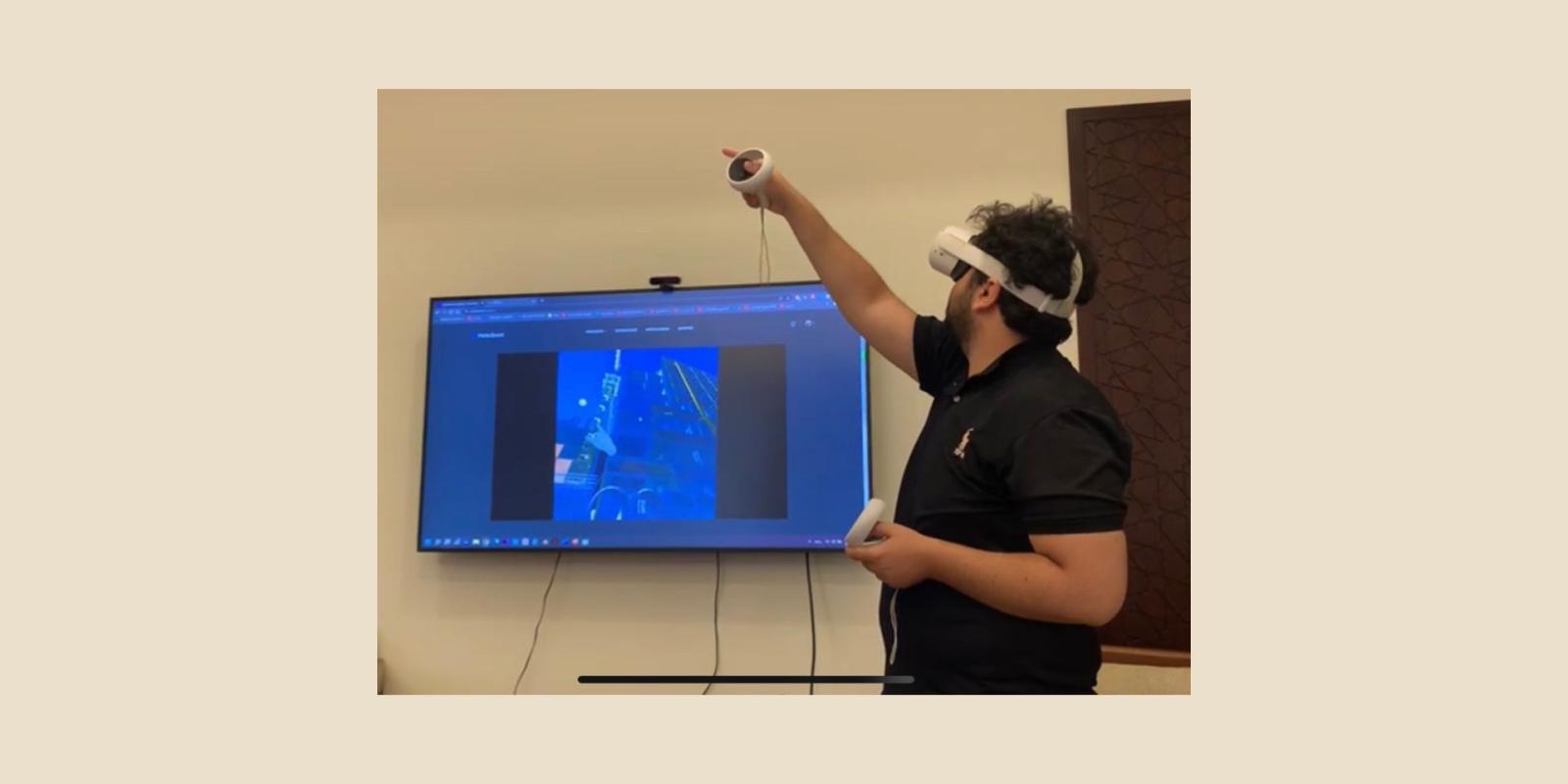
AUC Department of Construction Uses Virtual Reality to Teach Site Safety
Faculty members and graduate students from AUC’s Department of Construction Engineering are using virtual reality (VR) to develop and deploy training models that will improve safety at construction sites. These training models allow students to navigate construction sites of bridges and high-rise buildings using VR headsets to visualize hazards, including falls, struck-by injuries, slips and general construction site safety.
“Recent studies show that around 60,000 fatalities occur annually worldwide due to construction accidents,” said Ossama Hosny, professor and graduate program director in the Department of Construction. “It is not just about time, cost and quality but also about safety in the workplace.”
Traditionally, students and construction workers learn about site safety through lectures and textbooks. The new VR models offer a hands-on, innovative way to encourage safe practices. “We have developed new VR-based safety training programs that address the potential hazards associated with some of the riskiest projects in the construction world,” said Ibrahim Abotaleb, assistant professor of construction engineering. “It has been found that lack of proper training is the main cause of on-site construction fatalities.”
Virtual Reality: A New Solution?
Construction VR training programs are becoming increasingly present in the industry worldwide, prompting new research on the effectiveness of VR training compared to traditional training.
Experimental testing of AUC’s models indicated that VR training significantly improved students’ understanding and visualization of safety procedures.
Research on the safety training models was presented in the Construction Research Congress by the American Society of Civil Engineers in Virginia, USA, and in the Canadian Society for Civil Engineering Conference in British Columbia, Canada. It was also published in the Journal of Computer Applications in Engineering Education.
“Based on the results of our studies, the models we developed performed better in terms of visualization, immersion, realism and ability to enhance the desired hazard identification and mitigation skills compared to traditional training programs,” Abotaleb stated. “The developed models are the first in the world to integrate adult learning theories abstracted from psychology into full training modules specialized in high-rise buildings and bridges.”
Student Engagement with Virtual Reality
Working on a full safety model for high-rise building construction as part of her thesis research, construction engineering graduate student Sahar Bader focused on the behavioral aspect of training. She incorporated learning theories to develop a sound methodology that includes motivation, reputation and problem-solving.
As part of his master’s thesis, Mohamed Sherif, a graduate student and research assistant, has combined VR and augmented reality to create an immersive safety training model for the construction of bridges and highways, a significant feat due to their importance in Egyptian national projects.
This is not the first time the construction engineering department has introduced VR in their teaching. During the COVID-19 lockdown, Abotaleb managed to provide his students with virtual field trips to construction sites from the safety of their own homes. Using VR, he captured construction sites with a 360-degree camera, recording surroundings, interviewing on-site workers and delivering lectures as if the students were there with him.
Hosny also has incorporated VR in one of his courses to allow students to better identify and mitigate risks associated with high-rise construction.
